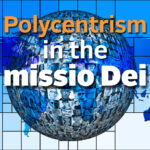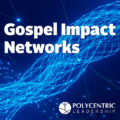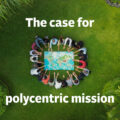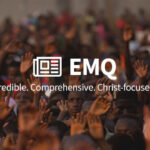R. Elliott Snuggs
This case study is taken from an article titled “How Movements Organize” written by R. Elliott Snuggs. The article helps modalities and sodalities understand themselves as movements rather than organizations. It was written for the Asian Access movement and is adapted here to understand movement structure in relationship to polycentric leadership
Core-Network-Cloud: The Structure of a Movement
The Merriam Webster definition of a movement is “an organized effort to promote or attain an end.” But movements are by their very nature wildly diverse with multiple centers of influence and centrifugal forces held together only by a vision for a desired end. So how they organize to attain that end requires “a collaborative, communal leadership empowering multiple centers of influence and a diverse array of leaders to meet today’s challenges,” the definition of polycentric leadership. We describe the Asian Access movement as composed of the core, the network, and the cloud.
Core
Every movement that has staying power to really accomplish something more than a flash in the pan has a vital core. Michael Malone states, “Successful companies of the future must find a way to continually and rapidly change almost every one of their attributes…yet at the same time retain a core of values, customs, legends and philosophy that will be little affected by the continuous and explosive changes taking place just beyond its edges” [The Future Arrive Yesterday Kindle Loc. 685]. Leaders in the core of Asian Access must be polycentric leaders typically without title or positional authority. They must use charisma, collaboration and relational acumen to be the centripetal force for the movement.
Network
The network executes innovative ideas. At Asian Access it is composed of multiple informal and formal “teams” that are committed to idea flow (See Stanley McChrystal’s Team of Teams). Asian Access team leaders are diverse, from multiple nations and theological streams. For the network to function requires that they live out community. These leaders have a bent toward communal, collaborative decision-making. They must be polycentric leaders.
Cloud
The cloud is the outer edges of a movement where there is rapid change and centrifugal forces are most acutely felt. But it is in the cloud that innovation is most often discovered. Leaders in the cloud may float in and out of the Asian Access movement. Thus, the shape of the movement is constantly shifting like a cloud. These leaders in the cloud must have entrepreneurial freedom. Yet they must also be relational, collaborative, and communal so that others in the movement are able to hear the innovations they bring from their awareness of what is outside of the movement. It is polycentric leaders who are best suited to operate at the edges of a movement’s cloud.
Questions
- Do you understand your own modality or sodality as a movement?
- How can your movement be more likely to move toward its desired end using the polycentric leadership model?
More Information
This study is published with permission from Asian Access.
Image by John Mark Arnold on Unsplash.










